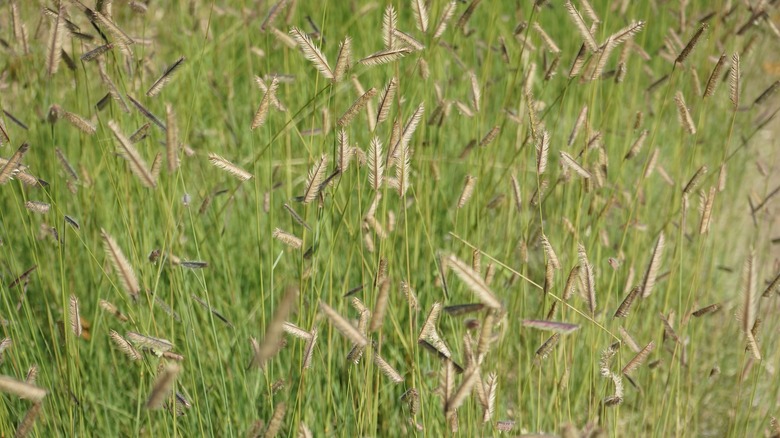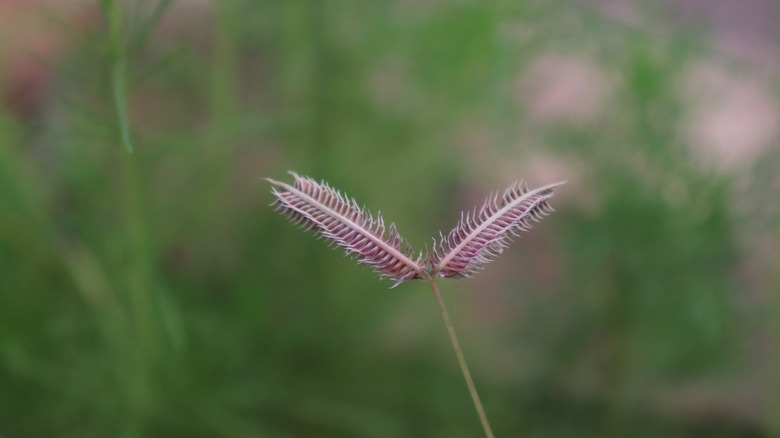How To Care For Blue Grama Grass In Your Yard For A Beautiful Landscape That Lasts
If you're tired of all the work and money that goes into keeping a traditional lawn looking green and healthy, it's time to switch to a low-maintenance grass option. In the United States, you can ditch traditional grass and replace it with blue grama (Bouteloua gracilis). Native throughout most of North America, including southern Canada and most of Mexico, blue grama is a short, warm-season grass adapted to the plains and dry prairies of the western half of the continent. If using it in a lawn, this makes it an impressively drought-resistant grass that is also moderately tolerant of foot traffic.
The clump-forming species can also be grown as an ornamental grass in your landscape. When allowed to go to seed, it develops tall, delicate seed heads that take on a bluish tint in the fall. This makes them a great addition to borders or for adding texture to flower beds.
While it's favored for its drought tolerance and ability to thrive in most soil types, a little care will go a long way toward making the blue grama in your yard as lush and healthy as possible. This is especially true if you're starting it from seed as it germinates easily but can be slow to fill in and get fully established. For best results, plant blue grama in dry, well-drained soil in an area that gets full sun. Depending on how you're using it, you may need to water it occasionally during dry periods.
How to plant and care for blue grama grass
If you're starting a blue grama lawn from seed, the recommended seeding rate is about 3 to 5 pounds per 1,000 square feet. After spreading the seed on bare soil, gently rake the area to lightly cover the seeds with dirt. You can do this any time between April and mid-May — just make sure you're past your region's last frost date. Blue grama is hardy in zones 4 through 9, but it needs time to get established before a freeze. So, if you're in the colder part of its range, consider starting flats of blue grama seedlings indoors and transplanting the plugs into your yard come spring. Keep the soil around seeds consistently moist until they've germinated. Then, cut back to watering once or twice a week until they're well-rooted and mature.
Once established, blue grama can survive on as little as 7 inches of rain per year, but it might not develop a thick, solid mat of turf in such dry conditions. The easiest and least resource-intensive way to address this is to simply mow it less often. While it can tolerate being mowed regularly at a height of 3 inches, letting blue grama grow a little more can help shade the soil and roots below. This will reduce the amount of water it needs.
Another option is to supplement rainfall by watering your blue grama lawn. To keep a lush, green lawn through the summer, make sure it gets about 1 or 2 inches of water every four to five weeks. Irrigate your grass all at once in a single soaking.

